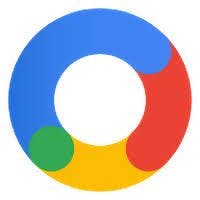What is Google Analytics?
Google Analytics is used to track website performance and collect visitor insights. It can help organizations determine top sources of user traffic, gauge the success of their marketing activities and campaigns, track goal completions (such as purchases, adding products to carts), discover patterns and trends in user engagement and obtain other visitor information such as demographics.
Google Analytics: Understanding The Basics
Once you’ve added Google Analytics to Shopify, browse some of the really handy guides available online. Google has a helpful introduction on getting started with analytics, and Shopify has a dedicated Google Analytics support page.
Going through all the different parts of Google Analytics would take A LOT more than just one guide (and that’s not what this guide is about). But we’ll give you a quick definition of each of the key metrics you can see on your dashboard.
- Sessions – the number of interactions one visitor makes in 30 minutes when they visit your store (Google’s default timeframe). So if a shopper arrives on your site, visits two pages, buys a product and exits in under half an hour, this counts as one session.
- Users – visitors who have initiated at least one session, so this doesn’t include users who have had multiple sessions. For example, a user who visits your site and returns an hour later would count as two sessions, but one user.
- Average Session Duration – how long, in hours, minutes and seconds the average session lasts.
- Bounce Rate – we’ve all done it: clicked onto a page but hit the back button immediately because we haven’t found what we’re looking for. We haven’t interacted with that page and Google calls that a bounce. Bounce Rate is just a way of measuring how many people are doing this on your site.
- Percentage New Sessions – what percentage of your sessions are first-time visits.
How To Add Google Analytics To Shopify (And Use It)
Understanding Shopify analytics is key if you want to run a thriving ecommerce store.
If you run an ecommerce store on Shopify, you’ll know one of the biggest challenges is finding out how your customers are using your store.
Brick-and-mortar store owners can ask them in person what they think of their products, layout and checkout process. But your shoppers sit behind a computer and could be miles away.
As an ecommerce store owner, that presents a bit of a problem right? Even once you’ve found the information you need, how do you use it to improve your Shopify store?
If you’re looking for an answer to these questions, you’ve come to the right place. To provide a quality shopping experience you need to know what your customers want. The way to find this out is through analytics.
